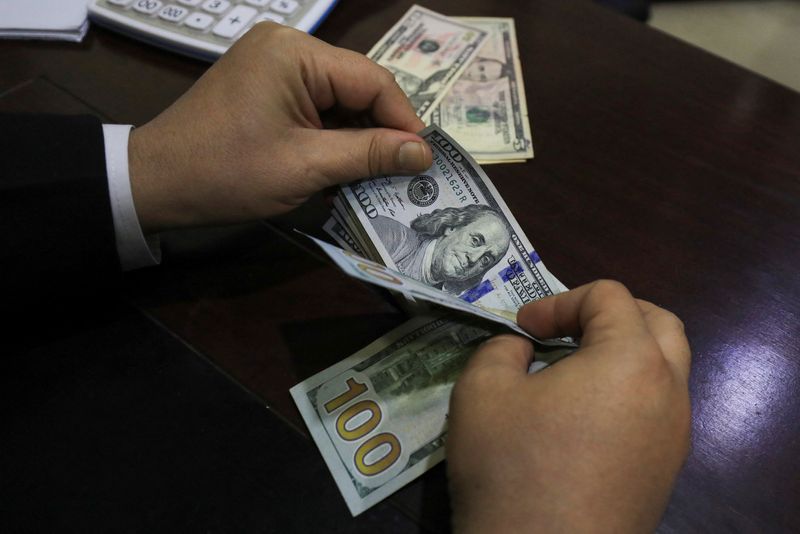
By Stefano Rebaudo
(Reuters) -The dollar rose towards its highest level in more than two years on Tuesday as strong economic data led investors to scale back bets on Federal Reserve rate cuts, while potential U.S. tariffs remained in the spotlight.
After a jobs report on Friday reinforced support for the U.S. central bank’s cautious stance, investors will closely watch U.S. inflation readings, with producer prices (PPI) due later on Tuesday and consumer prices (CPI) on Wednesday.
Traders are pricing in 28 basis points of Fed monetary easing this year, less than the 50 basis points the Fed projected in December.
U.S. Treasury 10-year yields touched a 14-month high of 4.805% on Monday before pulling back. They were down 3 basis points (bps) at 4.776% on Tuesday.
“That (PPI data in line with consensus) should keep the dollar in demand into tomorrow’s CPI, where we see some risks of a milder-than-expected print,” said Francesco Pesole, forex strategist at ING, flagging that markets expect an acceleration in the core producer price measure from 0.2% to 0.3% monthly.
With President-elect Donald Trump set to step back into the White House next week, the focus has been on his policies that analysts expect will boost growth and price pressures.
The threat of tariffs along with fewer Fed rate cuts priced in has lifted Treasury yields and supported the greenback.
However, on Tuesday the market focus returned to the chance that U.S. tariffs may be raised gradually, after a new media report suggesting the U.S. could take a measured approach.
“The nomination hearing of Scott Bessent for U.S. Treasury Secretary on Thursday will be interesting, especially if he makes any comments about the dollar and other currencies, potential tariffs, a shadow Fed, and the U.S. fiscal outlook etc,” said Paul Mackel, global head of forex research at HSBC.
Bessent is expected to keep a leash on U.S. deficits and to use tariffs as a negotiating tool, mitigating the expected inflationary impact of the U.S. economic policy.
The euro was up 0.12% at $1.0257. It touched $1.0177 on Monday, its lowest level since November 2022.
The single currency dropped more than 6% in 2024 as investors fretted about tariff threats and the monetary policy divergence between the Fed and the European Central Bank.
“We project a euro/dollar range of 0.95-1.05 this year and we stay bearish,” said George Saravelos, global head of forex strategy at Deutsche Bank.
“The market is pricing a Fed-European Central Bank terminal gap of 200 bps compared to our view of 300 bps given divergent growth and fiscal outcomes,” Saravelos added.

